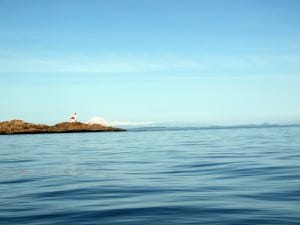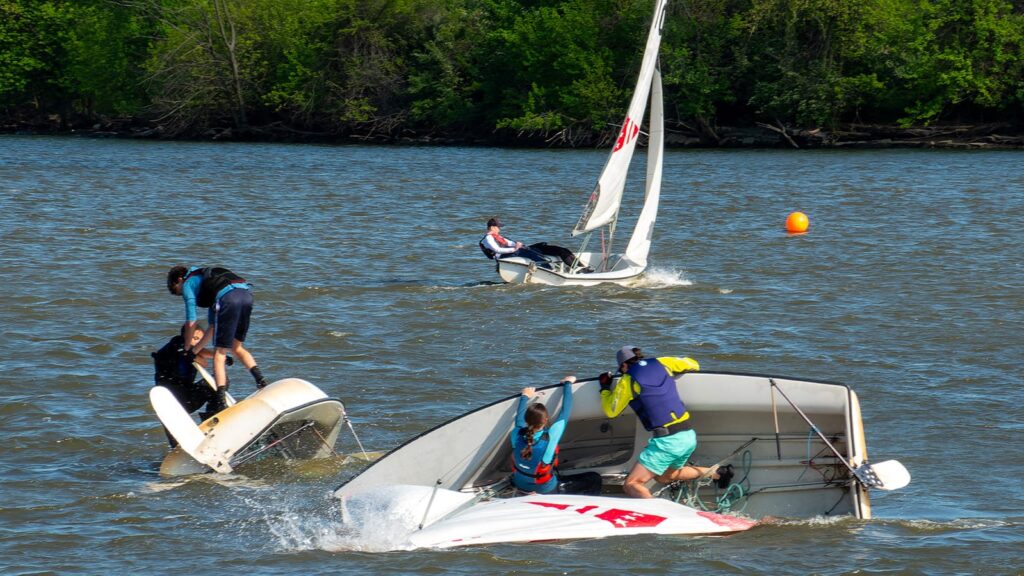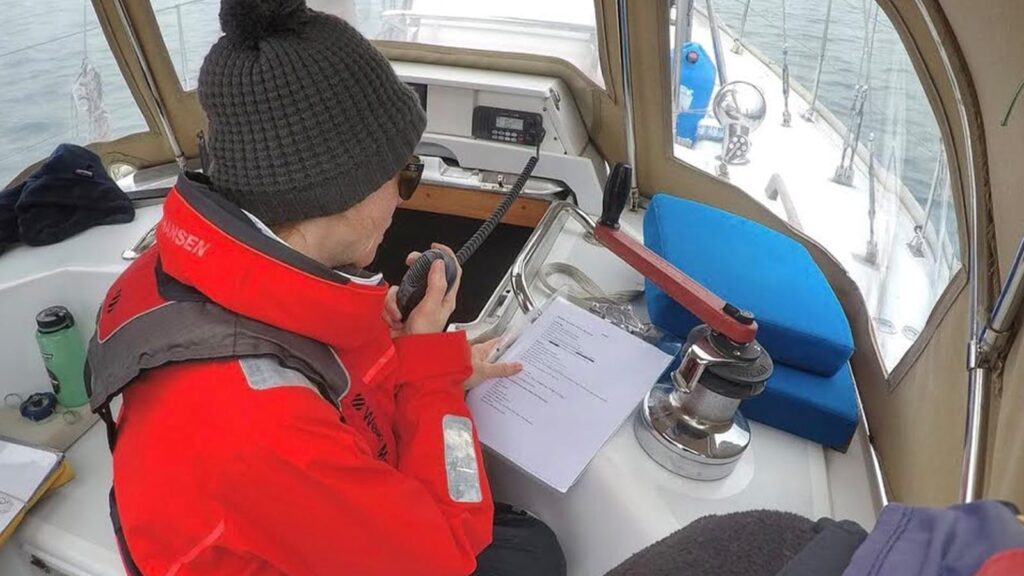 Continuing the Voyaging with Velella series by ASA writer-at-large Meghan Cleary. Meghan, her fiance Prescott, and their kitten Nessie have just finished a 6-month cruise in Mexico and are now sailing the Pacific Northwest.
Continuing the Voyaging with Velella series by ASA writer-at-large Meghan Cleary. Meghan, her fiance Prescott, and their kitten Nessie have just finished a 6-month cruise in Mexico and are now sailing the Pacific Northwest.
When we picked up Velella in Victoria after 6 months of cruising in Mexico, we quickly remembered how to deal with cooler-weather sailing. We pulled out our heavy wool blankets, a tray to catch water from our wet rainboots, full-fingered sailing gloves and high-collared foulies, tea and oatmeal. We also just as quickly were re-introduced to the challenges of sailing in waters with strong currents—and in the Puget Sound, San Juan Islands, and Strait of Juan de Fuca, they can be STRONG.
So strong in fact, that if you don’t time your passage right, the current might be faster than your boat speed, and push you backwards. I’ve seen this happen to a little sailboat struggling to get under the Golden Gate Bridge. Luckily, we had a favorable current with us as we crossed the Strait of Juan de Fuca headed towards Port Townsend. We were making a whopping 7+ knots most of the day, meaning we had at least 2-3 knots of current working for us, and we arrived in Port Townsend much earlier than we’d expected.
Our plan was to spend the night at anchor off Port Townsend, then ride the next day’s current down into Seattle. We didn’t have the 2011 current tables onboard, but we did have the tide tables. Though tides and currents do not always correlate as closely as you might think, we figured we’d bet on the fact that when the big tide started rolling into the Puget Sound at 9am, we’d be able to coast it down to Seattle starting shortly thereafter. So, we decided to get underway at 10am.

In order to head to Seattle from Port Townsend, you first have to round Morrowstone Point and then turn south. As we poked our bow out around the point, we could see the turbulence in the water and figured perhaps we were still a bit early and that the end of the tide might still be flowing out. We pulled out into the channel anyway, and our speed immediately dropped from 5 knots to 2 knots. Then 1.8 knots…. Then we realized that according to the chart plotter we were moving 1.8 knots—in the opposite direction of where we were headed! We were pointed “upriver,” but the current was so strong it was pushing us backwards, farther and farther from the point we were trying to get around. Good thing there was no one around the witness this embarrassing situation : )
Rather than fighting the opposing current and wasting gas, we pulled back into the calm eddy behind the point and cut the engine. We decided to wait another hour to see if the tide would start working in our favor. To kill time, we sailed south toward the point, turned into the current, sailed backwards (northwards), then pointed out of the current, and sailed south in the eddy again. The boat was facing south the whole time and we were sailing in circles!

Finally, the current released its grip and we were able to make way in a southerly direction, slowly at first, and then picking up speed as the tide filled in behind us. No harm done, and we got to sail backwards at 2 knots an hour, so…I’ll check that off the list.
If you’re a sailor looking for a new challenge, come sharpen your skills and learn to sail in Puget Sound—in addition to wind, we have currents, fog banks, and lots of diverse aids to navigation to pay attention to. (We also have Orcas and harbor seals and bald eagles and rainbows!) It’s a challenging and gorgeous place to sail. Our expert flotilla leaders know the local waters (including the tides and currents, of course!) and visit all of the best spots.
Tips to remember for sailing with currents:
• Always leave ample room from land, especially points that stick out into the path of a strong current.
• Wear your PFD at all times! This should be your habit anyway, but you do not want to fall overboard without a lifejacket in areas of strong currents, upwellings, and whirlpools.
• Most importantly, don’t assume the tide tables are an adequate way of predicting currents. Carry a copy of NOAA’s current predictions with you when sailing in the Puget Sound or other coastal waters with strong currents, because (counterintuitively) tides and currents do not always coincide.
Here’s where Meghan and Velella are going with the flow right now:
View Voyaging with Velella in a larger map









